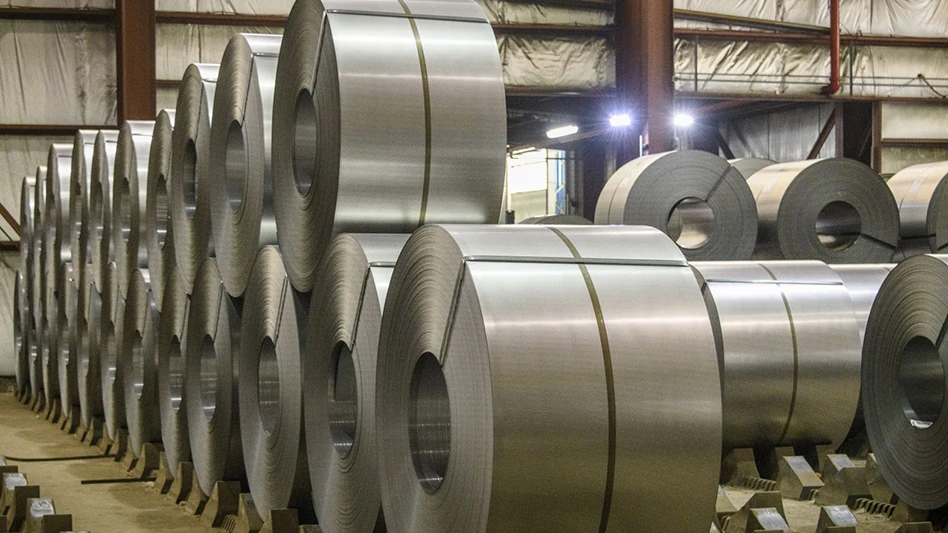LANDFILL CLAUSE PART OF AVIATION BILL
Legislation approved by the House of Representatives and signed by President Clinton in April for $40 billion in aviation improvements also includes a clause that raises hurdles for the construction of landfills within six miles of small airports.
The Wendell H. Ford Aviation Investment and Reform Act for the 21st Century (AIR 21) designates money to be spent on items ranging from aviation improvements and construction to safety standards for traveling pets.
But what does burying solid waste have to do with aviation safety? The answer lies in the seagulls attracted to landfills. Bird strikes, or collisions between birds and planes, are said to pose a special danger to smaller aircraft.
According to the Federal Aviation Administration (FAA), the close proximity of a landfill to the airport and planes could pose a threat to small aircraft.
The legislation restricts construction of new landfills within six miles of a public airport that has received certain federal grants; that is served primarily by general aviation aircraft; and that handles regularly scheduled flights of planes designed for less than 60 passengers. A grandfather clause is included that excludes action to landfills constructed before the legislation was enacted.
While landfill owners may not be enthused about the legislation, it could create more opportunities for recyclers by directing the FAA to study the use of recycled materials in pavement used for runways, taxiways and aprons. Recycled materials are defined as including recycled pavements, waste materials and byproducts.
CHELSEA CENTER AWARDS FUNDS FOR RESEARCH
The Chelsea Center’s Recycling-Based Community Economic Development Program is working to explore ways for Massachusetts communities to expand their economic base by taking advantage of the “hidden values” in municipal solid waste.
With grants of up to $25,000 available from the Chelsea Center, Chelsea, Mass., the communities are assessing their municipal and manufacturers’ waste streams and linking the information to their community economic development programs. “Communities are beginning to see their waste as a resource,” says Amy Perlmutter, Chelsea Center executive director. “This program gives communities the opportunity to turn liabilities into assets and demonstrates how recycling-based economic development can create jobs, add to the local tax base and contribute to the growth of a community’s manufacturing sector.”
One such project in Boston’s Chinatown is working on is a composting program for Chinatown’s food related business waste. The project will look at the economic benefits of urban composting and explore material re-use. The industrial city of Taunton, Mass., will study the scrap produced at factories as potential feedstock for new recycling-based businesses.
Funding for the projects comes from the Clean Environment Fund, comprised of unredeemed bottle deposits. The Chelsea Center can be reached at (617) 887-2300 or www.chelseacenter.org.
ATTAINING PAPER MARKET FORE$IGHT
A report produced by Moore & Associates, an Atlanta-based paper recycling consulting firm, takes a look at recovered paper markets twenty years into the future. Company president William P. Moore examines the projected supply of and demand for the Old Newspaper and Old Magazine grades of recycled paper, ultimately making a price forecast for the grades.
The report, available for $2,000, uses Moore & Associates’ proprietary “Fore$ight” model and considers several factors that will influence the pricing of the #8 Old Newspapers grade and the #10 Old Magazines grade.
Moore notes that the two grades “are primarily used at North American newsprint mills, leading to a strong correlation between their prices.”
Among factors Moore considers when making projections are the general economy, industry oper-ating rates, virgin fiber pricing, and the growth of electronic media at the expense of print.
Another study in the works by Moore will take a look at the prospects and possibilities of buying and selling secondary fiber through e-commerce mechanisms.
CONNECTICUT MAKES ELEMENTARY DISCOVERIES
The Connecticut Department of Environmental Protection, Hartford, has found that most schools have recycling programs in place but the practice of recycling has still not become habit.
The common problem throughout the schools was the lack of awareness of state recycling requirements. Many employees believe recycling at school is a “nice” thing to do, but do not realize that the program is just as important at school as it is at home if state recycling goals are to be met.
Another common problem is the visibility of the program at school. Some classrooms may have recycling bins, but administrators’ offices may not. Recycling bins can also become storage bins, which undermines the effectiveness of the program.
Once schools are inspected, a follow-up letter is sent to the school officials offering suggestions to bolster the school’s recycling program. Recommendations have included: forming a district-wide recycling committee that could offer advice to the district as a whole; improving the graphic visibility of the program by using colorful posters and signage; and using newsletters and daily announcements as a way to remind people to recycle.

Explore the May 2000 Issue
Check out more from this issue and find your next story to read.
Latest from Recycling Today
- Fitch Ratings sees reasons for steel optimism in 2025
- P+PB adds new board members
- BlueScope, BHP & Rio Tinto select site for electric smelting furnace pilot plant
- Magnomer joins Canada Plastics Pact
- Out of touch with reality
- Electra names new CFO
- WM of Pennsylvania awarded RNG vehicle funding
- Nucor receives West Virginia funding assist





